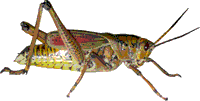Entomology Collections, General

Entomology Papers from Other Sources
Document Type
Article
Date of this Version
9-2013
Citation
Applied and Environmental Microbiology, December 2013, Volume 79, Number 24, pp. 7590–7597. doi:10.1128/AEM.01979-13
Abstract
Bacillus thuringiensis is an important source of insect resistance traits in commercial crops. In an effort to prolong B. thuringiensis trait durability, insect resistance management programs often include combinations of insecticidal proteins that are not cross resistant or have demonstrable differences in their site of action as a means to mitigate the development of resistant insect populations. In this report, we describe the activity spectrum of a novel B. thuringiensis Cry protein, Cry1Bh1, against several lepidopteran pests, including laboratory-selected B. thuringiensis-resistant strains of Ostrinia nubilalis and Heliothis virescens and progeny of field-evolved B. thuringiensis-resistant strains of Plutella xylostella and Spodoptera frugiperda. Cry1Bh1 is active against susceptible and B. thuringiensis-resistant colonies of O. nubilalis, P. xylostella, and H. virescens in laboratory diet-based assays, implying a lack of cross-resistance in these insects. However, Cry1Bh1 is not active against susceptible or Cry1F-resistant S. frugiperda. Further, Cry1Bh1 does not compete with Cry1Fa or Cry1Ab for O. nubilalis midgut brush border membrane binding sites. Cry1Bh1-expressing corn, while not completely resistant to insect damage, provided significantly better leaf protection against Cry1Fa-resistant O. nubilalis than did Cry1Fa-expressing hybrid corn. The lack of cross-resistance with Cry1Ab and Cry1Fa along with independent membrane binding sites in O. nubilalis makes Cry1Bh1 a candidate to further optimize for in-plant resistance to this pest.


Comments
Copyright © 2013, American Society for Microbiology. All Rights Reserved. Used by permission.